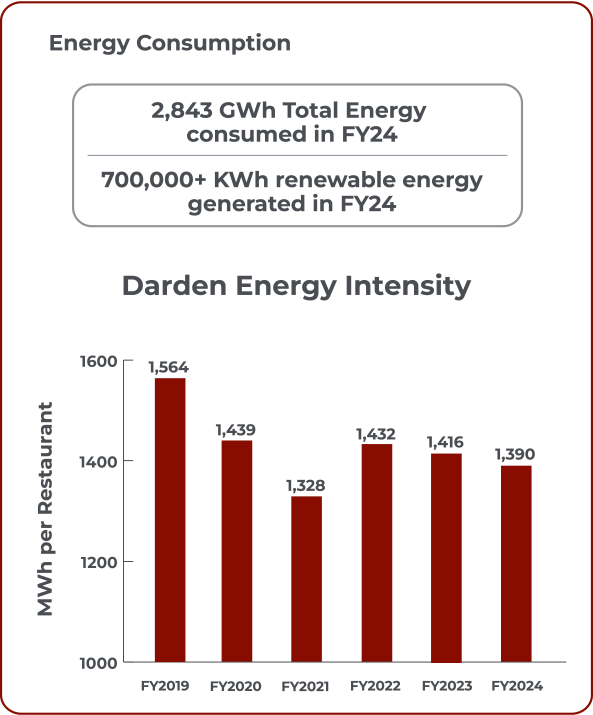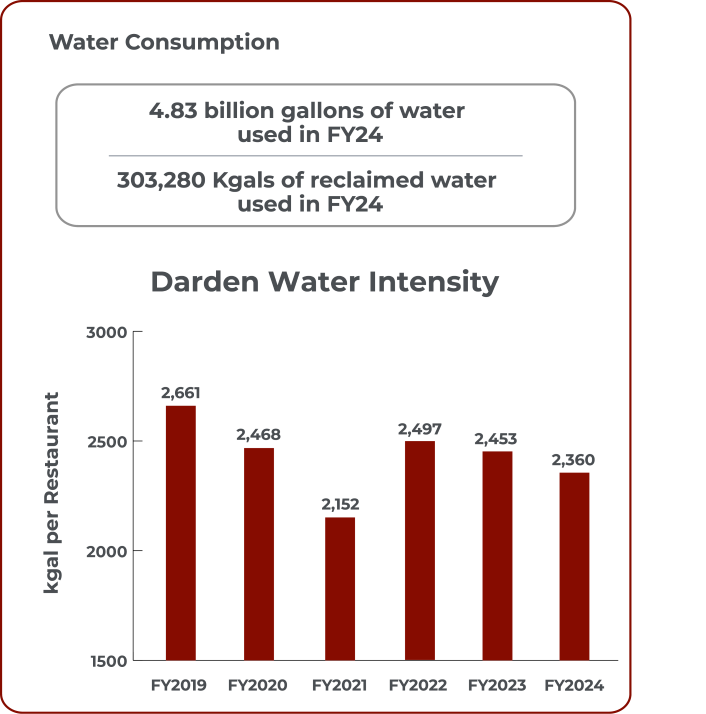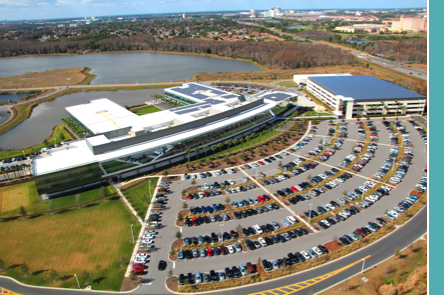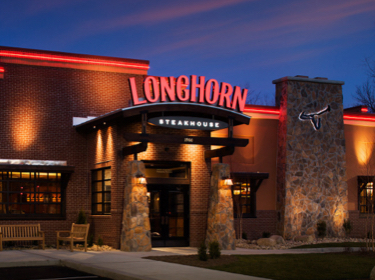Conserving Energy & Water
We began tracking our energy and water usage in 2008 and we continue to focus on managing energy and water conservation efforts.


*Year over year reductions in 2020 can be attributed directly to COVID-19 impacts and therefore reductions to energy and water use. Pre-COVID, we were on track with maintaining water efficiency in restaurants and slight reductions in energy use on average.
Operating Efficient Restaurants
As we continue to grow and build new restaurants, we remain committed to energy and water efficiency as part of our restaurant designs. That is why we design our restaurant prototypes using industry best practices, ensuring that each new Darden restaurant is outfitted with a wide range of features that optimize energy efficiency, water efficiency, recyclables and clean air.
WATER EFFICIENCY
- Water Efficient Landscaping
- Drip Irrigation System
- Hands-Free Faucets
- Low-Flow Sinks
- Low-Flow Flush Valves
RECYCLABLES & CLEAN AIR
- Storage & Collection of Recyclables
- Low Emitting Materials
- No Smoking In/Around Restaurants
ENERGY SAVINGS
- Exterior Light Pollution Reduction
- Daylight Harvesting
- LED Interior Lighting
- Lighting & HVAC Controls
- Reduced Heat Island Effect
Leveling Up Efficiency at Existing Restaurants
With more than 2,000 restaurants, we recognize the impact that we can make by continuing to optimize energy and water conservation efforts within our existing buildings. Below are steps we have taken to enhance our existing restaurants:
- Tested advanced kitchen equipment in more than 30 restaurants during fiscal 2024 that aims to reduce energy consumption
- Transitioned to LED light bulbs in our kitchens, dining rooms and exterior areas — which are 10 times more efficient than incandescent bulbs and last up to 20 times longer
- Standardized our “Power On, Power Off” approach by training restaurant teams to wait to turn on equipment until absolutely necessary, helping us save energy
- Implemented new processes for washing floors, inspecting for leaks and managing water usage
- Installed Energy Management Systems in most of our restaurants that enable us to better monitor and control temperature, lighting, and refrigeration and, in doing so, to use energy more efficiently and cost-effectively
- Used water-saving equipment including low-flow faucets, pasta-cookers, and heated dipper well equipment that results in annual savings of approximately 30,000 gallons of water per well
- Expanded usage of water-efficient landscaping and drip irrigation systems
- Invested in highly efficient HVAC equipment that meets our design criteria
Our LEED Gold-Certified Restaurant Support Center
 Built in 2009, our headquarters serves as a testament to our commitment to sustainability. The structure houses our Restaurant Support Center team and was designed to achieve LEED Gold certification for New Construction.
Built in 2009, our headquarters serves as a testament to our commitment to sustainability. The structure houses our Restaurant Support Center team and was designed to achieve LEED Gold certification for New Construction.
Key Sustainability Features
Energy Efficiency
- A 4,572-panel solar array which has a generating capacity of 1.1 megawatts (MW) of energy
- An automatic lighting system that dims or brightens based on the level of sunlight which reduces energy consumption by 16%
- A highly reflective roof system that reduces the heat island effect and helps maintain the building's interior temperature
- A four-story, 1,050-space parking garage, to minimize the heat island effect of extensive open parking lots
Water Conservation
- Restrooms and irrigation systems using reclaimed water — saving nearly 2 million gallons of water annually
- Landscaping features, including a bio-soil that promotes water absorption
- Use of native trees, plants and grasses that filter and slow runoff water
Waste Reduction and Recycling
- Recycled components included in 10% of building materials
- A single-stream recycling system that diverts nearly 12 tons of trash from landfill monthly
- Double-sided printers and copiers, which have reduced our paper use by 33%
Air Quality
- Low- or no-VOC paint, carpet and sealants (VOC = volatile organic compounds, i.e., harmful fumes)
- HEPA filters in the air ducts to minimize airborne allergens
- Cleaning partners that use only “green” cleaning products and techniques


